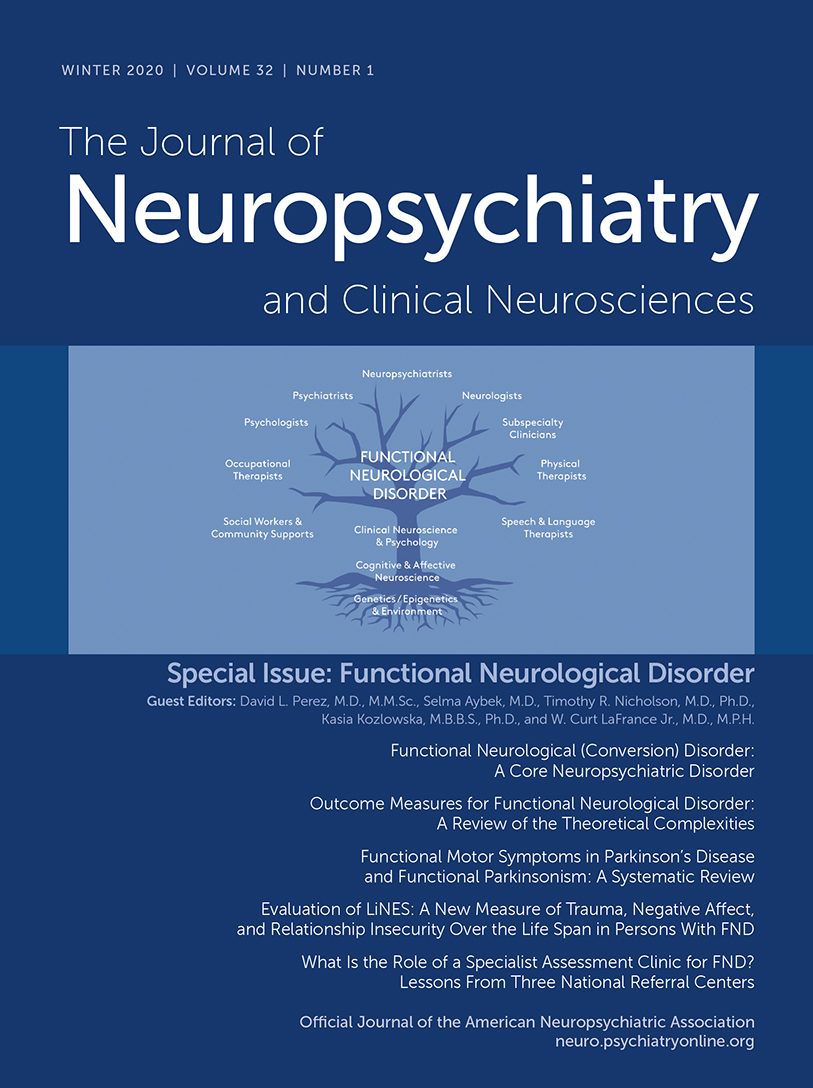What Does Neuroscience Tell Us About the Conversion Model of Functional Neurological Disorders?
Abstract
A dualistic mind-body understanding of functional neurological disorders (FNDs), also known as conversion disorders, has led to the view that the cause of the symptom should be either psychological (psychogenic) or physical (neurogenic-“organic”). One of the most influential psychological approaches is the Freudian model of conversion, which suggests that FNDs arise from a defense process in which emotional stress is converted into physical symptoms. This conversion theory has been challenged in recent years, accompanied by a shift in emphasis toward neuropathophysiological models of FND and away from historical psychological concepts. In this review, the authors consider the contemporary relevance of the conversion model from the neuroscientific perspective to reconcile the role of both psychological and biological factors in FND. A narrative review of recent neuroscientific findings pertaining to the conversion model of FND, encompassing neuroimaging, cognitive psychology, biological markers, and epigenetic studies, was performed. Research on the role of psychological stressors is discussed. Neurobiological mechanisms of repression of traumatic memories and their translation into physical symptoms are then explored. Finally, the role of physical symptoms as a potential protective defense mechanism against social stressors is considered. The authors argue that the conversion concept is consistent with recent neuroscientific research findings, and the model allows psychological and neurobiological concepts to be reconciled within a single account of FND that begins to resolve the dualistic mind-body dichotomy.



